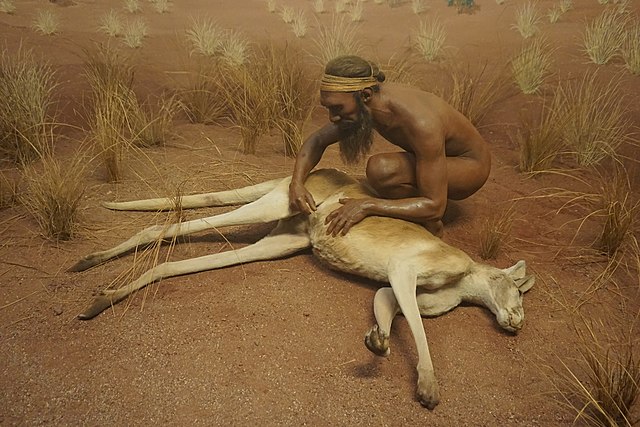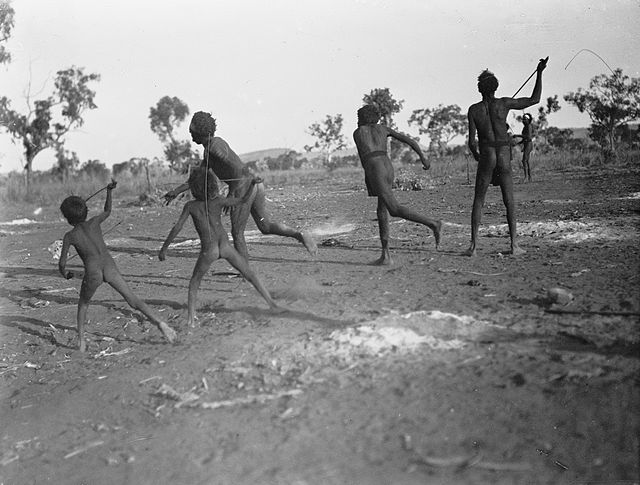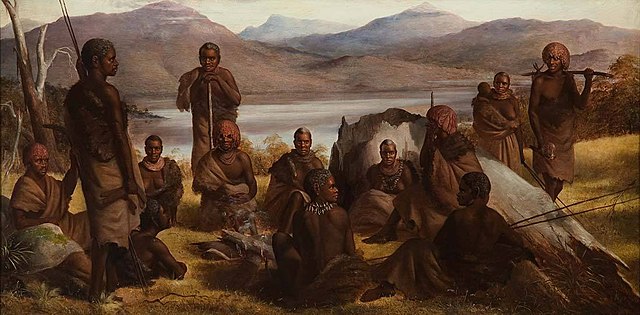The Arrernte people, sometimes referred to as the Aranda, Arunta or Arrarnta, are a group of Aboriginal Australian peoples who live in the Arrernte lands, at Mparntwe and surrounding areas of the Central Australia region of the Northern Territory. Many still speak one of the various Arrernte dialects. Some Arrernte live in other areas far from their homeland, including the major Australian cities and overseas.
Arrernte welcoming dance, entrance of the strangers, Alice Springs, Central Australia, 9 May 1901, photograph
Artist Albert Namatjira was a Western Arrernte man.
The Hunters of the Central Australian Desert: Arunta Hunter diorama at the Milwaukee Public Museum
Indigenous Australians are people with familial heritage from, and/or recognised membership of, the various ethnic groups living within the territory of present day Australia prior to British colonisation. They consist of two distinct groups, which includes many ethnic groups: the Aboriginal Australians of the mainland and many islands, including Tasmania, and the Torres Strait Islanders of the seas between Queensland and Papua New Guinea, located in Melanesia. The term Aboriginal and Torres Strait Islander peoples or the person's specific cultural group, is often preferred, though the terms First Nations of Australia, First Peoples of Australia and First Australians are also increasingly common; 812,728 people self-identified as being of Aboriginal and/or Torres Strait Islander origin in the 2021 Australian Census, representing 3.2% of the total population of Australia. Of these Indigenous Australians, 91.4% identified as Aboriginal; 4.2% identified as Torres Strait Islander; while 4.4% identified with both groups. Since 1995, the Australian Aboriginal flag and the Torres Strait Islander flag have been official flags of Australia.

A group of Aboriginal men in possum-skin cloaks (c. 1858) in Victoria
Men and boys playing a game of gorri, 1922
Clan-head of the Kirræ Wuurong peoples, c. 1881
Robert Hawker Dowling, Group of Natives of Tasmania, 1859







